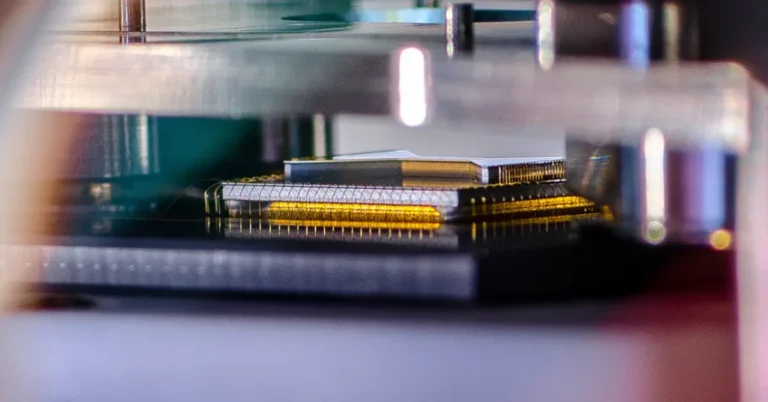Qubits Python
Imagine a world where computers defy logic as we know it—where bits are no longer just 0s or 1s, but something more. That’s the world of quantum computing, and at the heart of it are qubits. Now, what if I told you that you could start experimenting with qubits using just Python? Sounds like science fiction? Well, it’s not. In fact, with the right tools, anyone with basic programming skills can get started.
In this article, we’ll take a deep dive into the fascinating intersection of quantum computing and Python. Whether you’re a curious coder or an aspiring quantum developer, this guide will help you understand qubits in Python, how they work, and how to start exploring quantum computing with Python-based tools.
What Are Qubits and Why Are They Special?
Before we get into the details, let’s break down what qubits actually are. In classical computing, we use bits—small units of data that can be either 0 or 1. Qubits, however, can exist in a superposition of both states simultaneously. This means that a quantum computer can process vast amounts of data in parallel, making it exponentially more powerful for certain tasks.
But there’s more—qubits can also be entangled, meaning that the state of one qubit is directly linked to the state of another, no matter the distance between them. These properties give quantum computers their immense potential, and Python allows us to harness this power with ease.
The Role of Python in Quantum Computing
Python has emerged as the go-to language for quantum computing development. Why? Because it is simple, widely used in scientific computing, and has an extensive ecosystem of libraries that support quantum computing. Libraries such as Qiskit (developed by IBM), Cirq (by Google), and PennyLane (by Xanadu) make it possible to program quantum computers with just a few lines of code.
These libraries provide built-in functions that allow developers to create, manipulate, and visualize quantum circuits without needing in-depth knowledge of quantum mechanics. This makes quantum computing more accessible to software developers, researchers, and even hobbyists.
Setting Up Your Python Environment for Quantum Programming
If you’re excited to start working with qubits in Python, you’ll need a few essential tools. One of the best libraries for quantum computing is IBM’s Qiskit. To get started, you need to install Python (version 3.8 or higher is recommended) and then install Qiskit. Once set up, you can access powerful quantum simulators and even run your programs on real quantum computers through IBM Quantum’s cloud service.
Beyond Qiskit, Google’s Cirq is another excellent library, designed specifically for Noisy Intermediate-Scale Quantum (NISQ) devices. PennyLane, on the other hand, is geared toward quantum machine learning, making it an interesting choice for those exploring AI and quantum computing.
Understanding Quantum Circuits and Qubits in Python
To truly grasp how qubits in Python work, it helps to understand the concept of quantum circuits. A quantum circuit consists of qubits, quantum gates, and measurements.
- Qubits: The fundamental units of quantum information, similar to bits in classical computing.
- Quantum Gates: Operations that change the state of qubits, much like logic gates in traditional computers.
- Measurement: The process of collapsing a qubit’s state to either 0 or 1 so that it can be read as classical data.
Quantum circuits allow us to perform operations on qubits and observe how they behave under different conditions. By using Python libraries like Qiskit, we can construct these circuits programmatically and simulate their behavior.
Quantum Gates and Their Role in Computation
Qubits in Python become even more powerful when we introduce different quantum gates. Some of the key ones include:
- Pauli-X (NOT Gate): Flips a qubit’s state from 0 to 1 and vice versa.
- Hadamard Gate: Creates superposition, allowing the qubit to be in both states simultaneously.
- CNOT (Controlled-NOT): An essential gate for entanglement, where one qubit’s state influences another.
- Phase Gates: Adjust the phase of a qubit’s state without changing its probability.
Understanding these gates is crucial for building more complex quantum algorithms, such as Shor’s algorithm for factorization or Grover’s search algorithm.
How to Simulate Qubits in Python
Running quantum programs on real quantum hardware is exciting but also comes with challenges such as noise and limited qubit connectivity. That’s why most developers start by simulating quantum circuits on classical computers.
Python allows for quantum simulations through tools like Qiskit Aer and Cirq’s simulator. These simulators help developers test their code, visualize qubit states, and debug quantum algorithms before deploying them on real quantum hardware.
Running Your Quantum Code on a Real Quantum Computer
Simulations are useful, but what if you could run your code on a real quantum computer? With IBM Quantum, you can access real quantum hardware by signing up for an account and connecting your Python environment to their cloud-based quantum processors. By doing so, you can test the true power of qubits and experience the nuances of real-world quantum computing.
Google, Rigetti, and other companies also offer access to quantum hardware, often through cloud-based platforms. As quantum computing technology advances, more companies are making their quantum processors available for research and development.
The Future of Qubits in Python and Quantum Computing
Quantum computing is still in its early stages, but learning to work with qubits in Python puts you ahead of the curve. Fields like cryptography, drug discovery, and AI could be revolutionized by quantum algorithms. By starting now, you’re preparing yourself for an exciting future in tech.
Many large tech companies, including IBM, Google, and Microsoft, are investing heavily in quantum research. Governments and universities are also pouring resources into this field. As a result, the quantum computing landscape is evolving rapidly, and skilled developers with knowledge of quantum programming will be in high demand.
How to Keep Learning and Stay Ahead
If this sparked your interest, there’s plenty more to explore. Quantum computing is a vast field, and new discoveries are being made every day. Here are a few ways to continue learning:
- Follow online courses: Platforms like Coursera and edX offer quantum computing courses taught by experts from MIT, Harvard, and IBM.
- Join the community: The Qiskit and Cirq communities are active on GitHub and Discord, where developers share insights and collaborate on projects.
- Experiment with real quantum computers: Many companies offer free access to quantum devices, allowing you to run experiments and test your algorithms.
- Read research papers: Staying updated with the latest advancements in quantum computing can help you understand where the field is heading.
Taking Your First Step into the Quantum Future
Quantum computing may seem like a complex and futuristic technology, but thanks to Python, it is more accessible than ever. By learning how to work with qubits in Python, you’re not just exploring a new programming paradigm—you’re stepping into the future of computing. Whether you’re a developer, researcher, or simply a tech enthusiast, this is the perfect time to start your journey into quantum computing.





